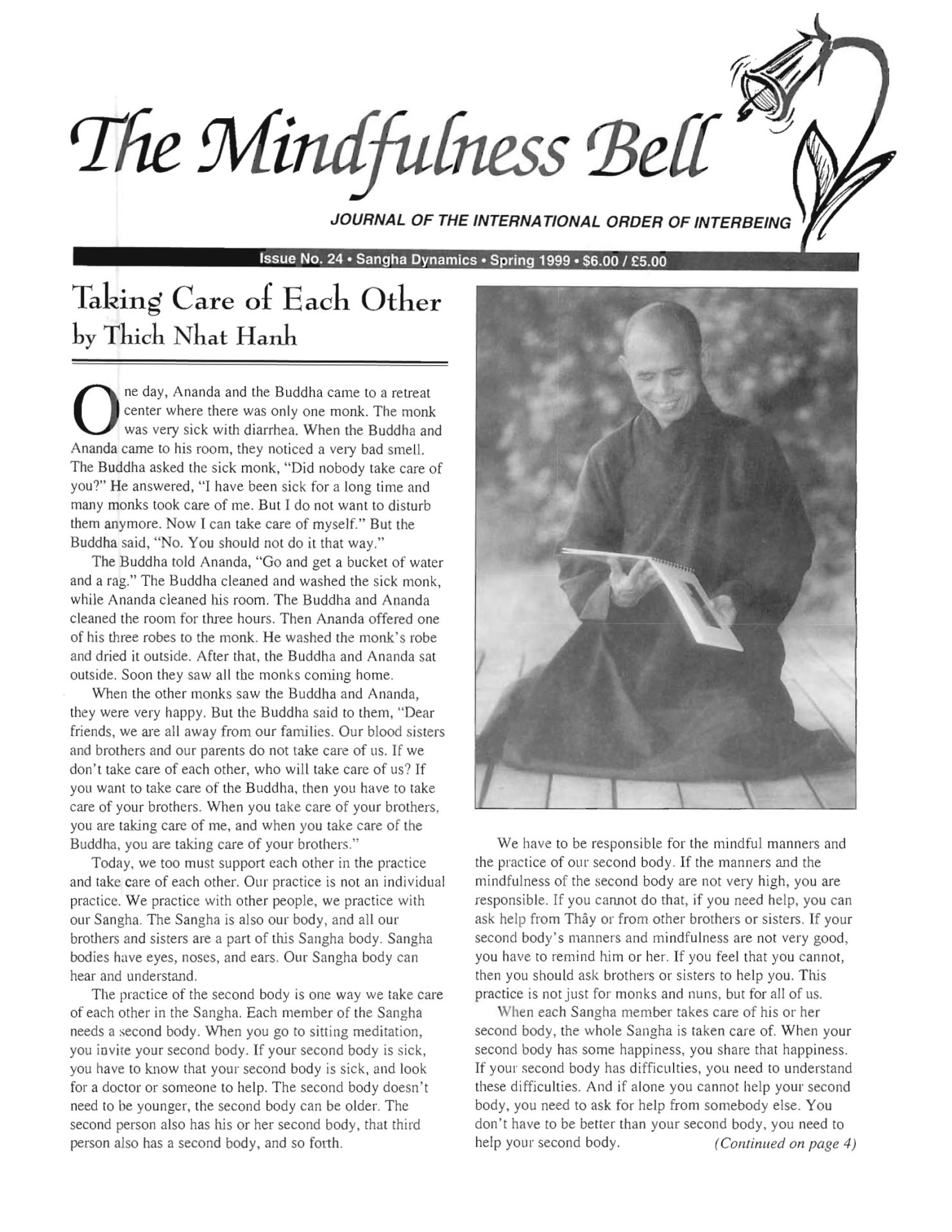By Rowan Conrad
Teachers say things and sometimes, a light comes on. Sister Annabel, quoting Thay, recently said, “Being in Sangha is like washing potatoes by putting them all in a pot of water and shaking them around. As they bump into each other, they are cleaned.” When she spoke, the light went on in me. And I fInally got it. Sangha isn’t just to sit and love and support. It is also to bump and learn.
By Rowan Conrad
Teachers say things and sometimes, a light comes on. Sister Annabel, quoting Thay, recently said, "Being in Sangha is like washing potatoes by putting them all in a pot of water and shaking them around. As they bump into each other, they are cleaned." When she spoke, the light went on in me. And I fInally got it. Sangha isn't just to sit and love and support. It is also to bump and learn.
In Sangha, we allow ourselves to come close together. Our closeness naturally generates some bumps. Bumps can hurt. Bumps can spotlight sore spots and aggressive projections. But, bumps don't mean we are dancing wrong with the Sangha. All of us are out of rhythm with ourselves and others in some places and some ways. So bumps come. Our "up close and personal" interactions with each other can bring out what Thay calls our "difficult seeds." We can see our bumps as "bad" or as "necessary educational means." But, if we were not close, we could not bump. Sangha is not about "no bumps." It is about learning and growing from our bumping and continuing to support each other in the process.
Sister Annabel also observed that it is very difficult to progress past a certain point in the practice without living in a residential Sangha. And another light went on in me. It is entirely too easy to run away when bumped outside a residential setting. After all, we just have to stay home. If we don't go-to Sangha events, we do not encounter either our bumper or the consequences of our own bumping.
When we take refuge in the Sangha, we say, "I take refuge in the Sangha, the community that lives in harmony and awareness." This beautiful defInition of Sangha may lead us to miss an important point: harmony and awareness are an aspiration, but not a continuous reality, at least for our lay Sanghas. Sister Annabel has suggested that we say, "the community that strives to live in harmony and awareness," because if we already lived in harmony and awareness, maybe we wouldn't even need the community of practice.
The process of bumping or getting bumped, and then facing, working, looking deeply, growing, and transforming is a gem of our practice. Assuredly it is less welcome than the harmony Sangha gem, but it is a true jewel, one of great importance and one with its own beauty.
Rowan Conrad, True Dharma Strength, contributes Right Livelihood perspectives to his work in the Career Services office of the University of Montana, where he also teaches classes on workplace attitudes and organizational psychology.

